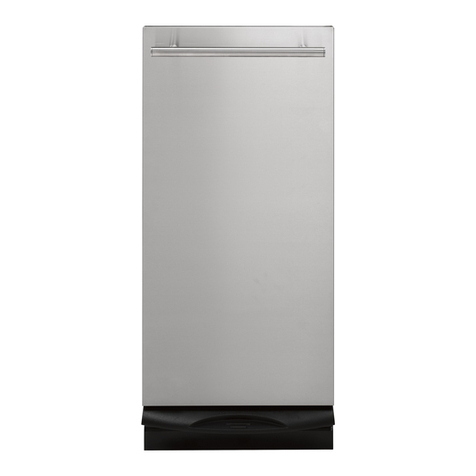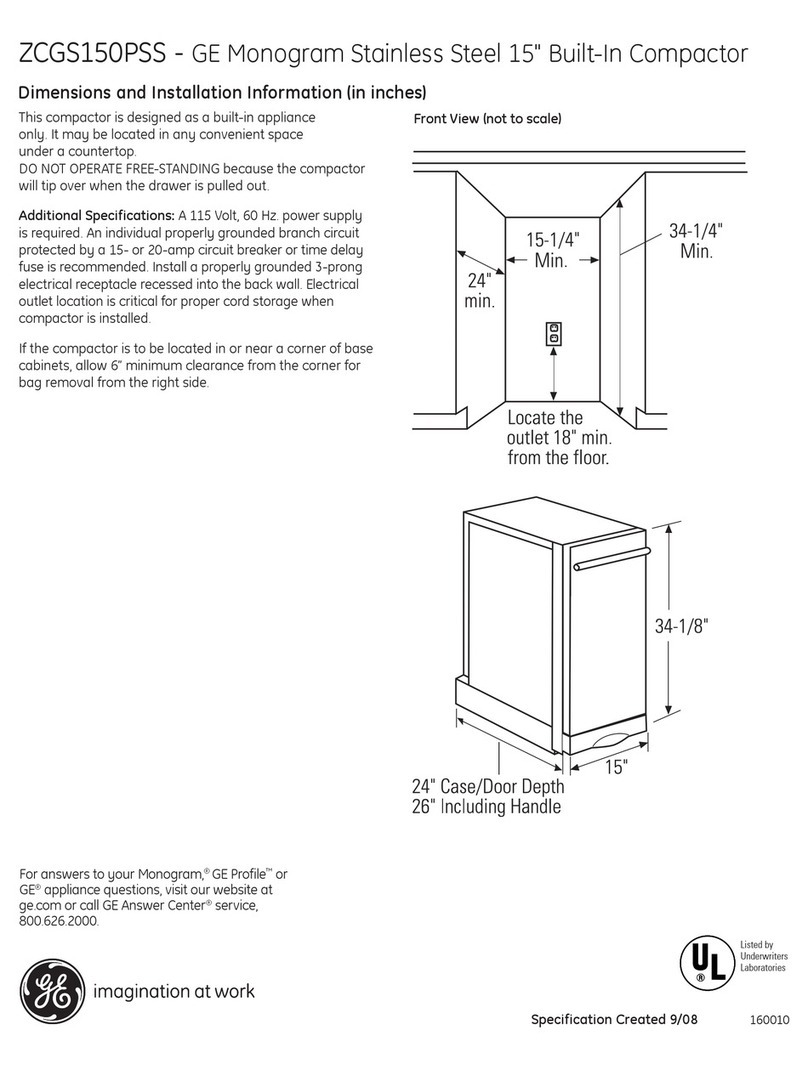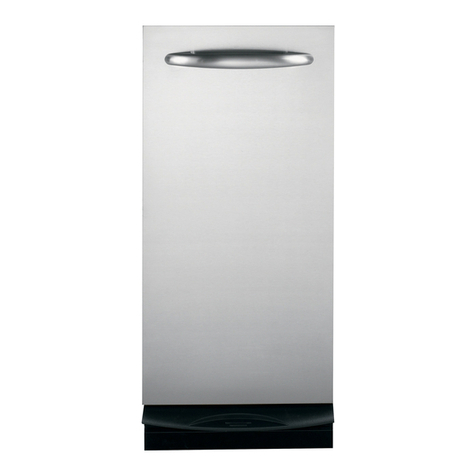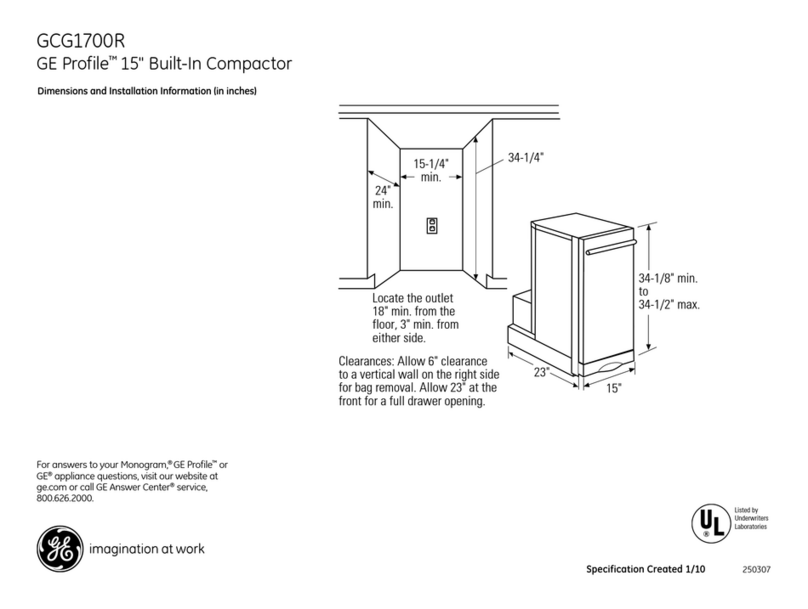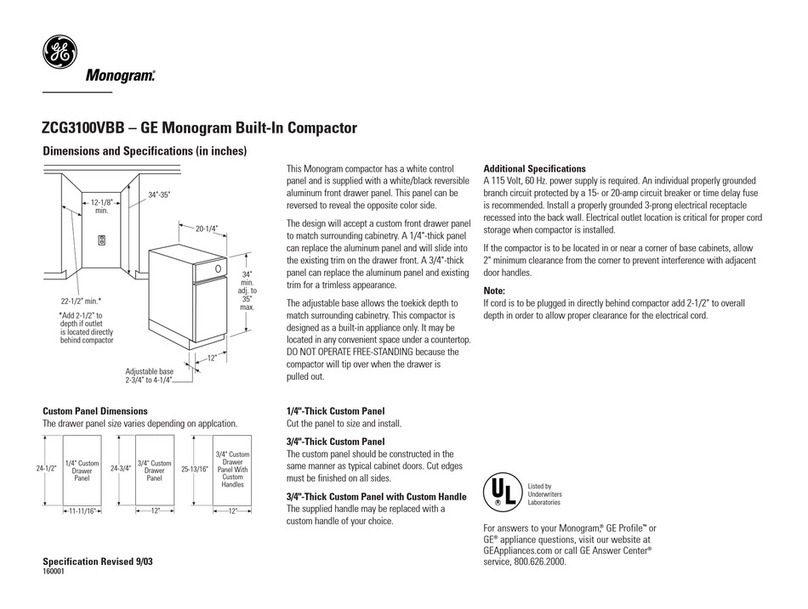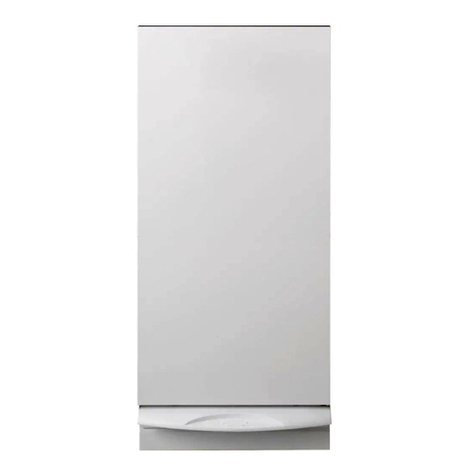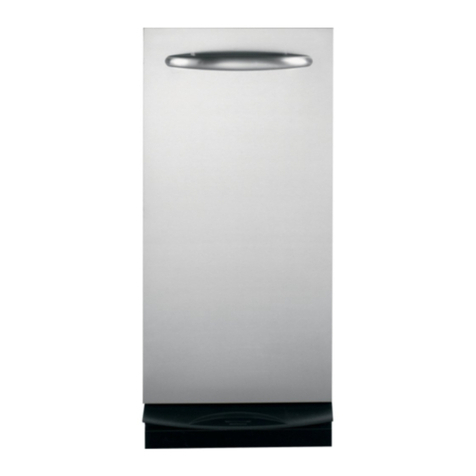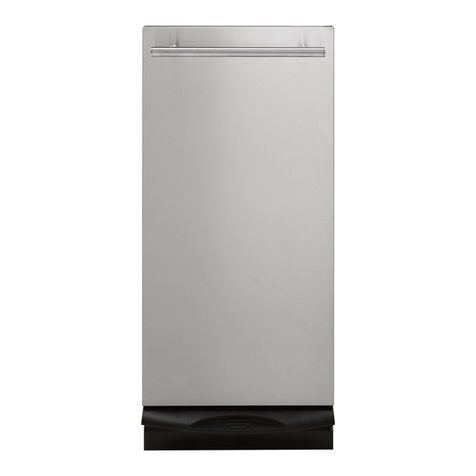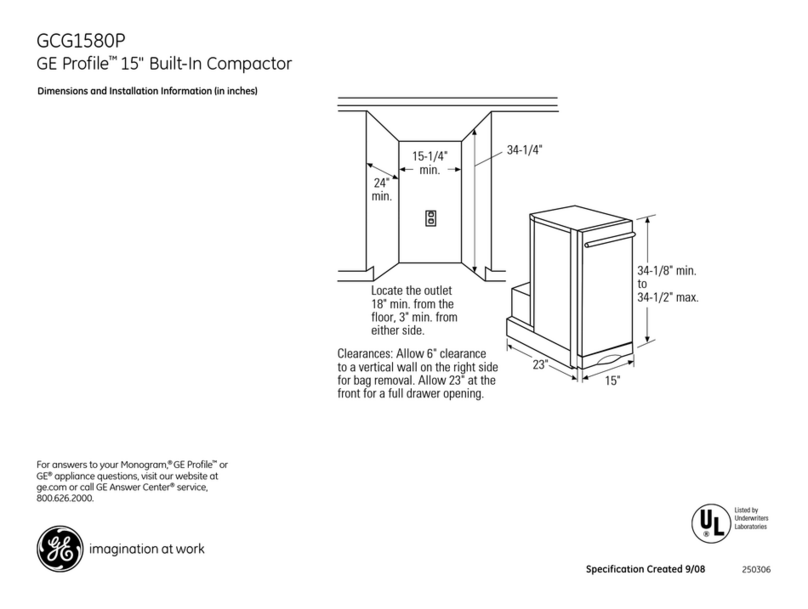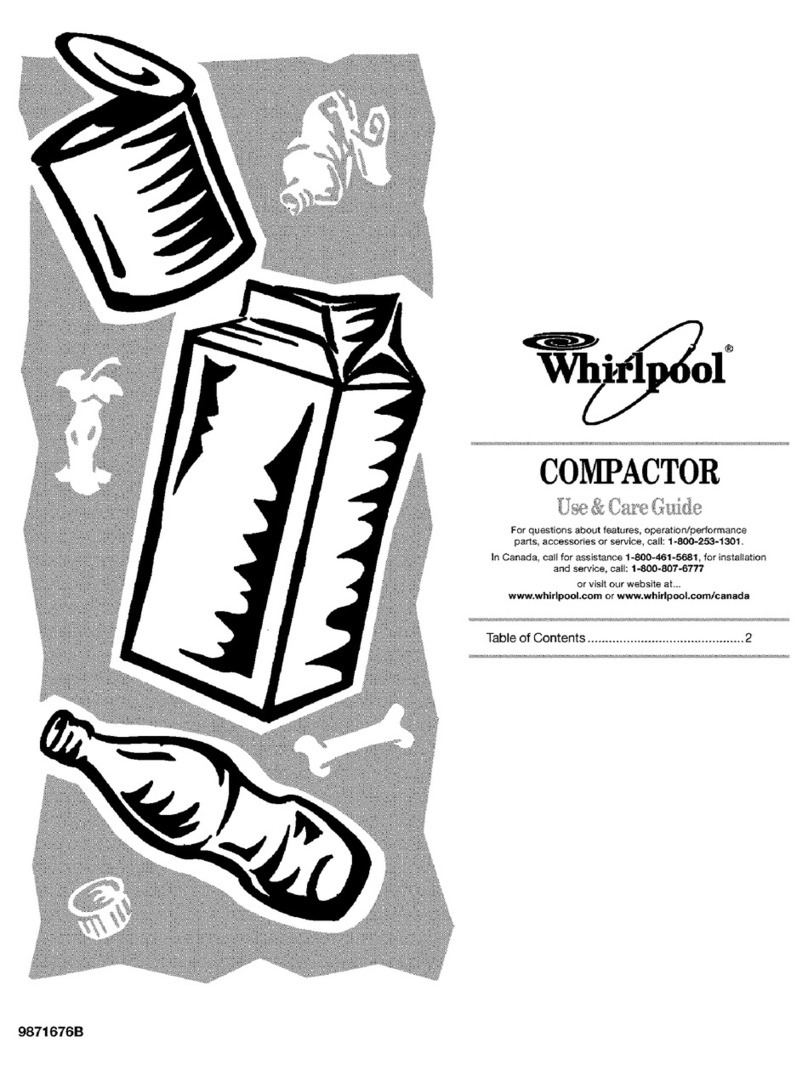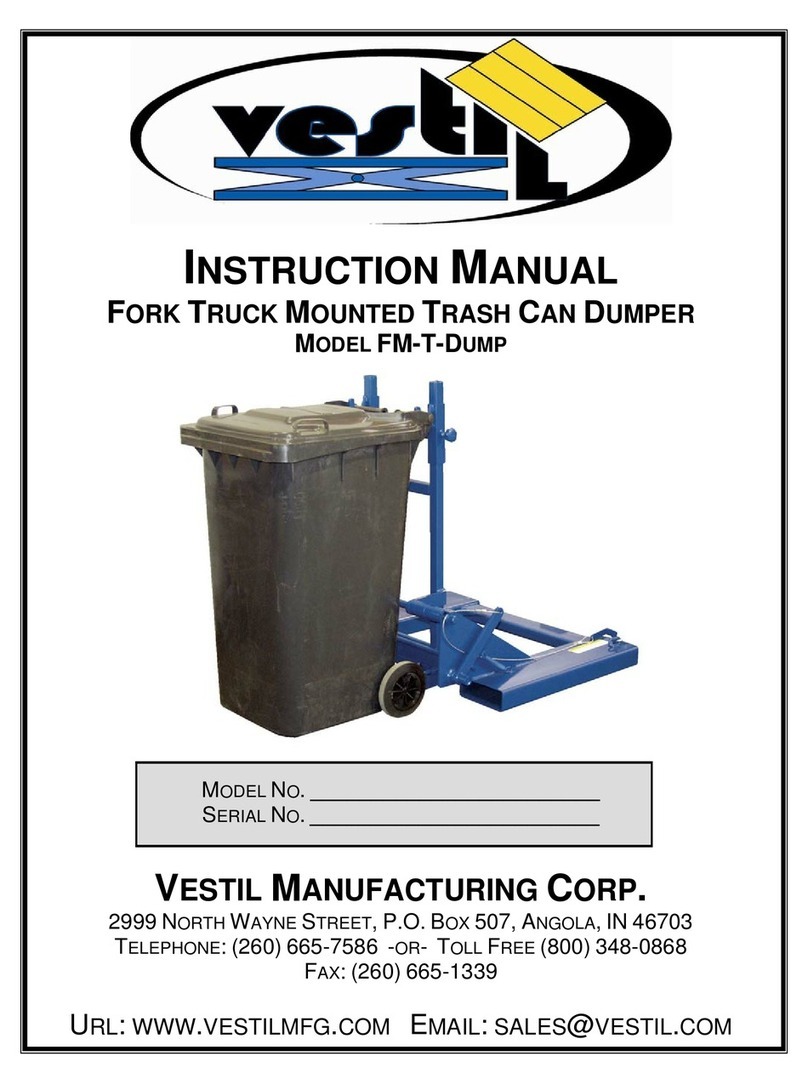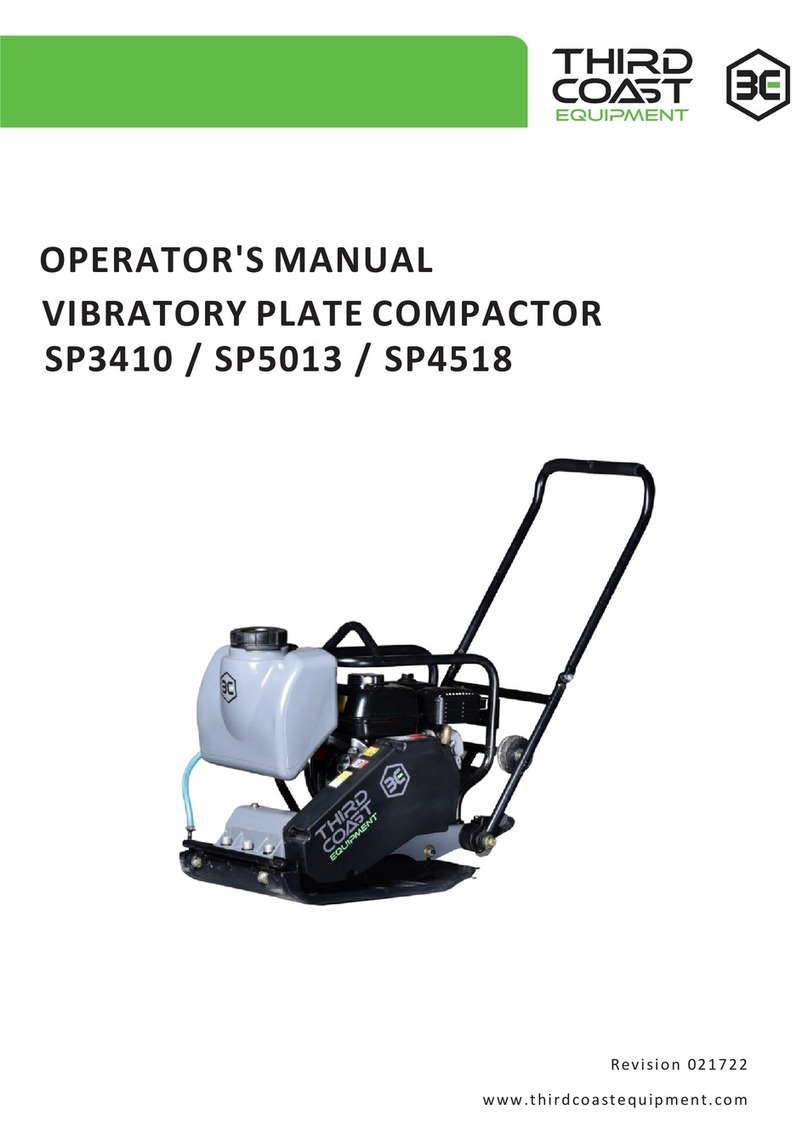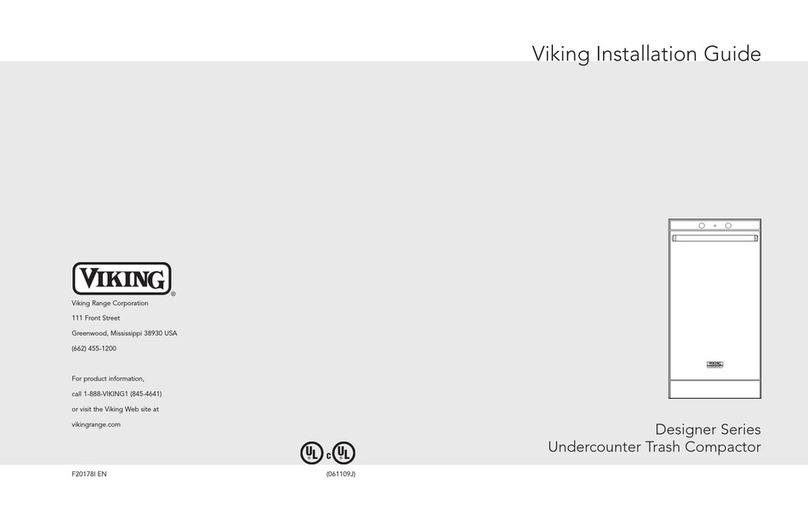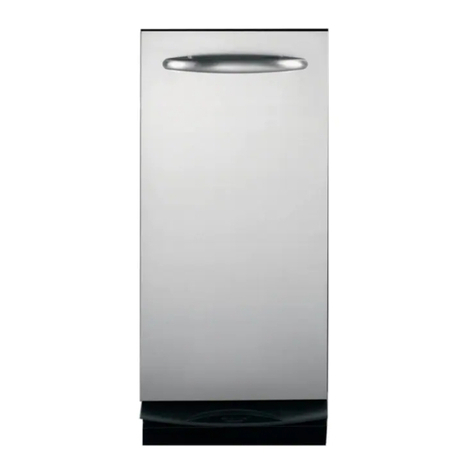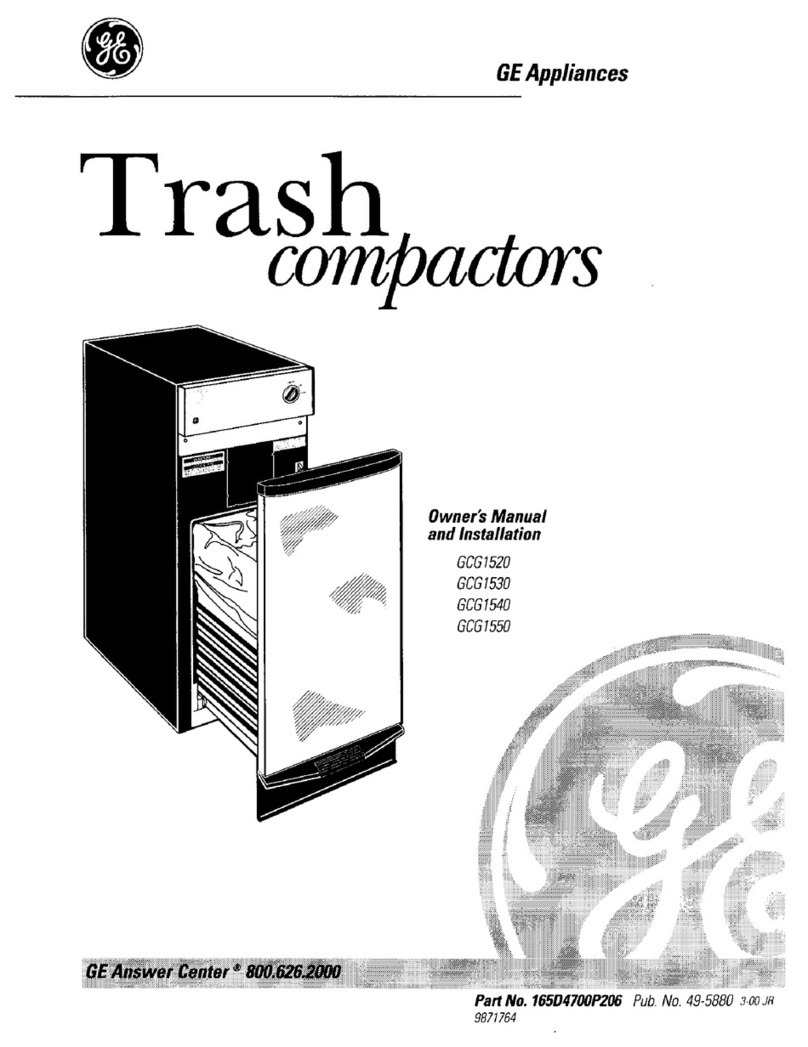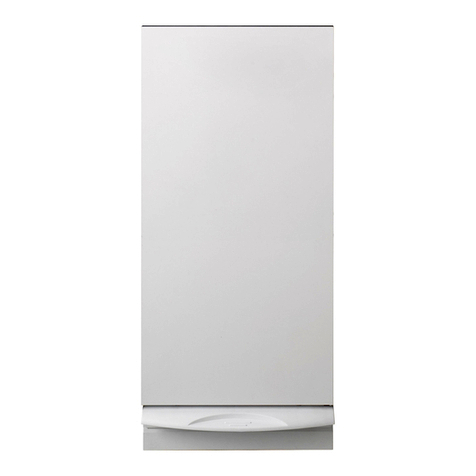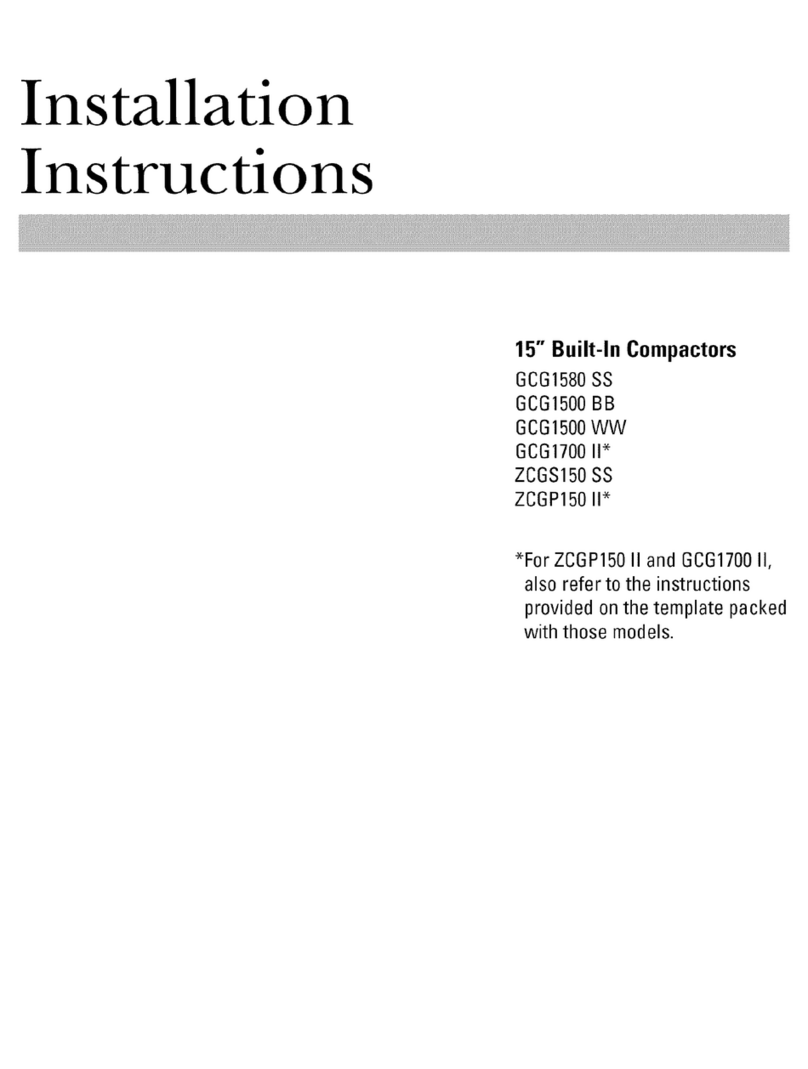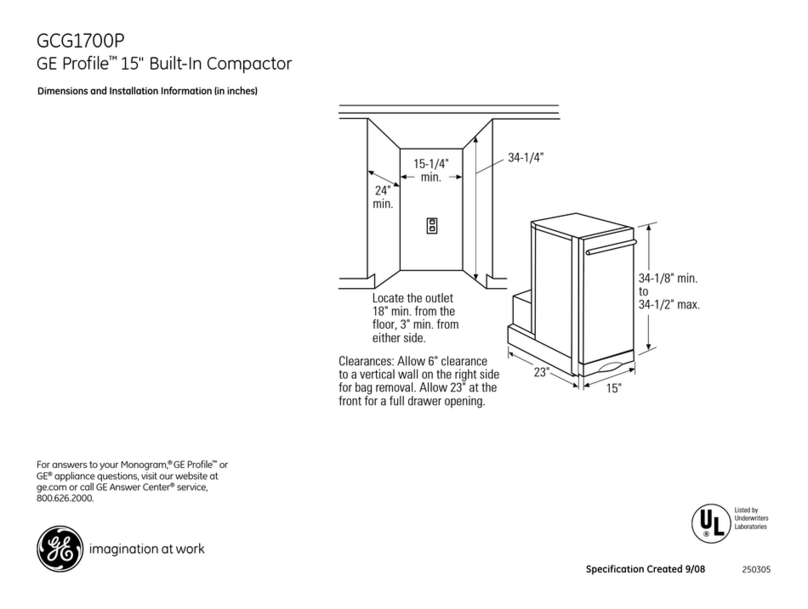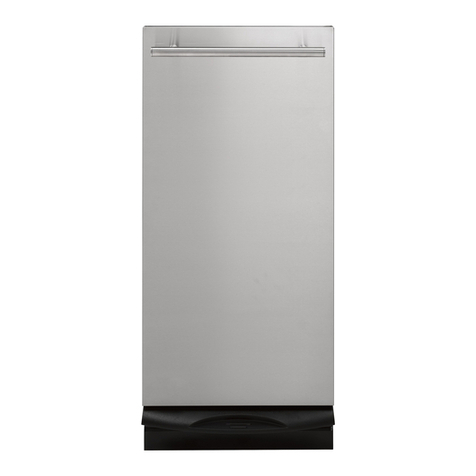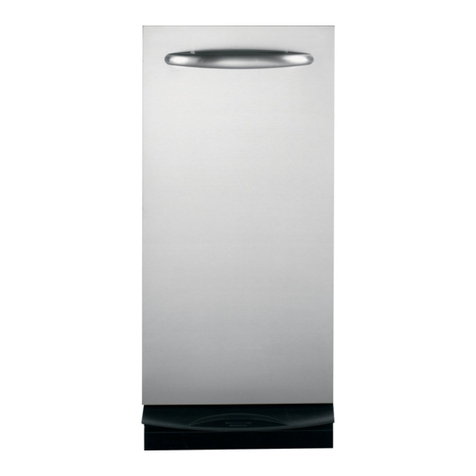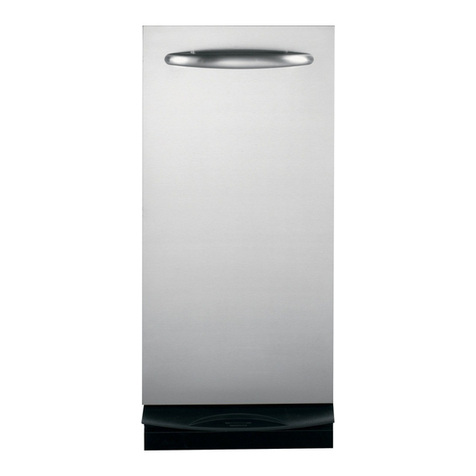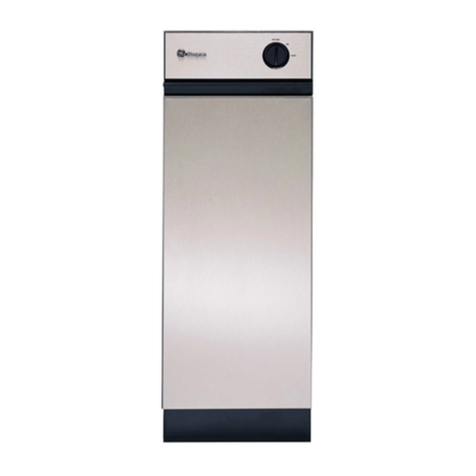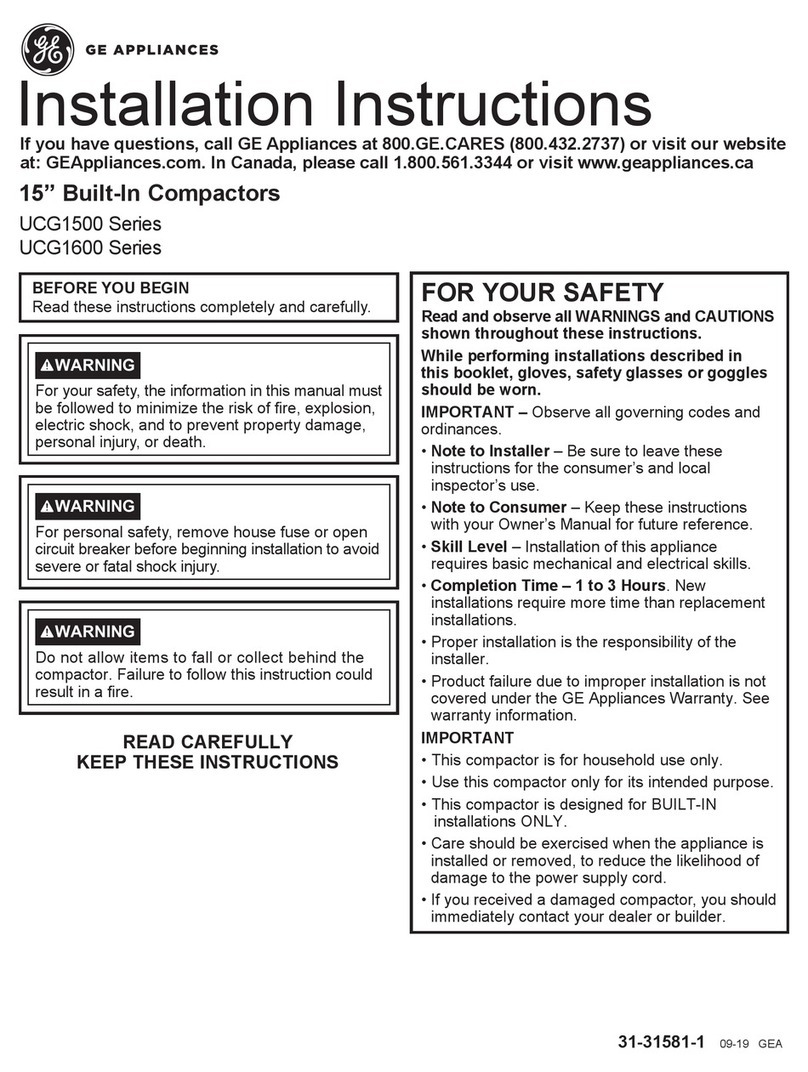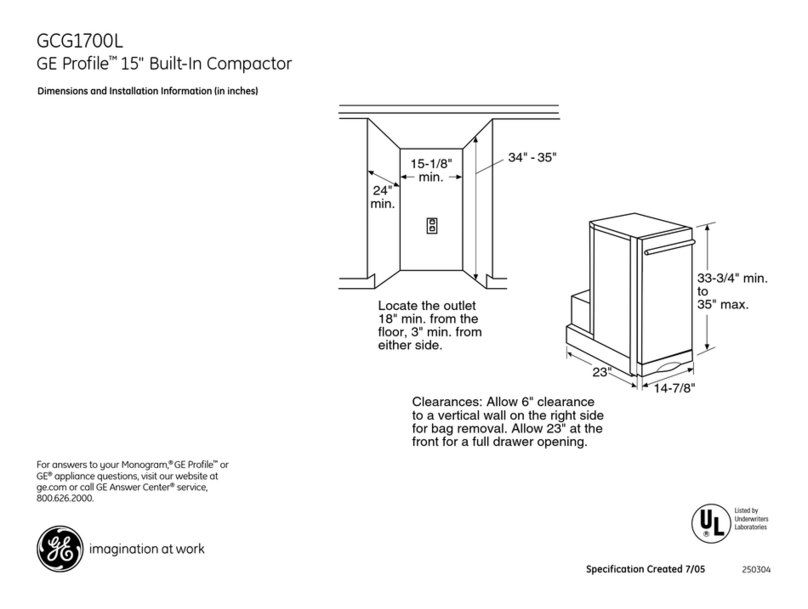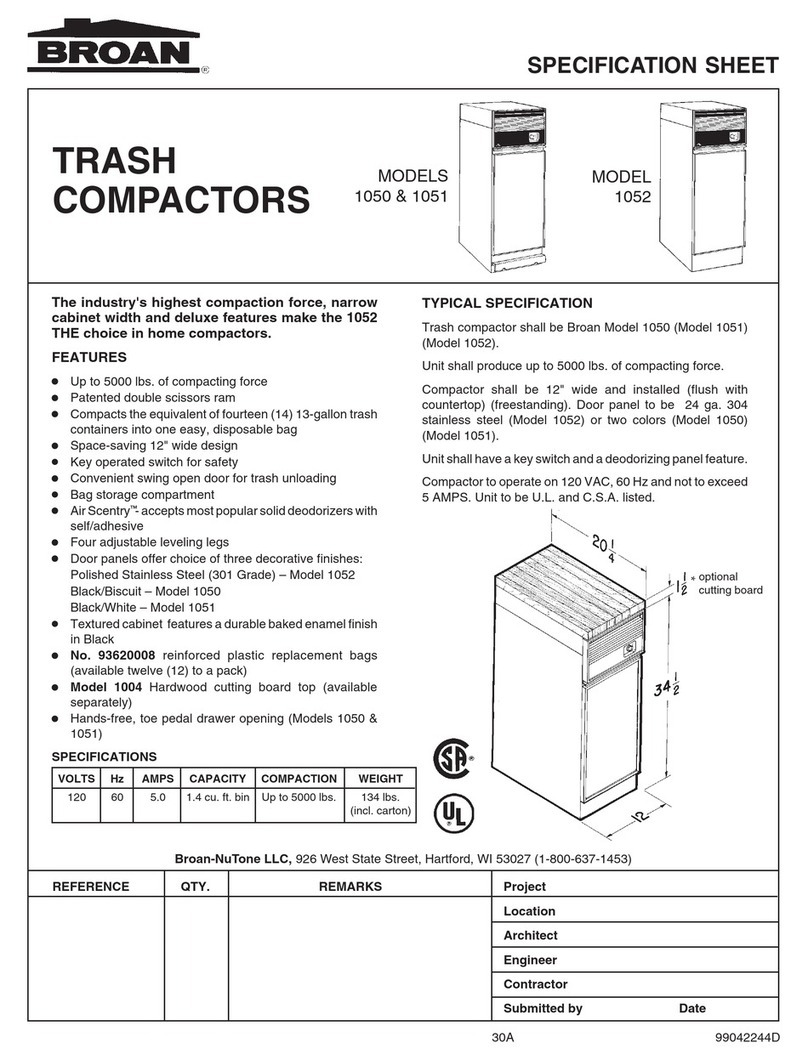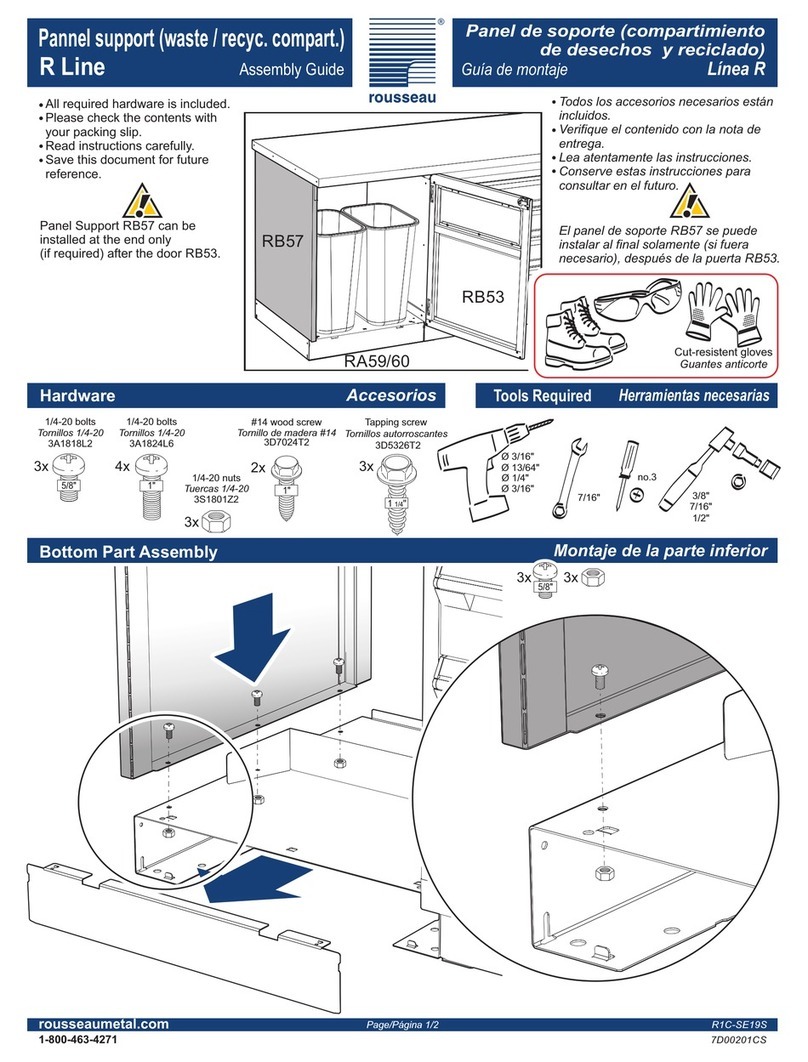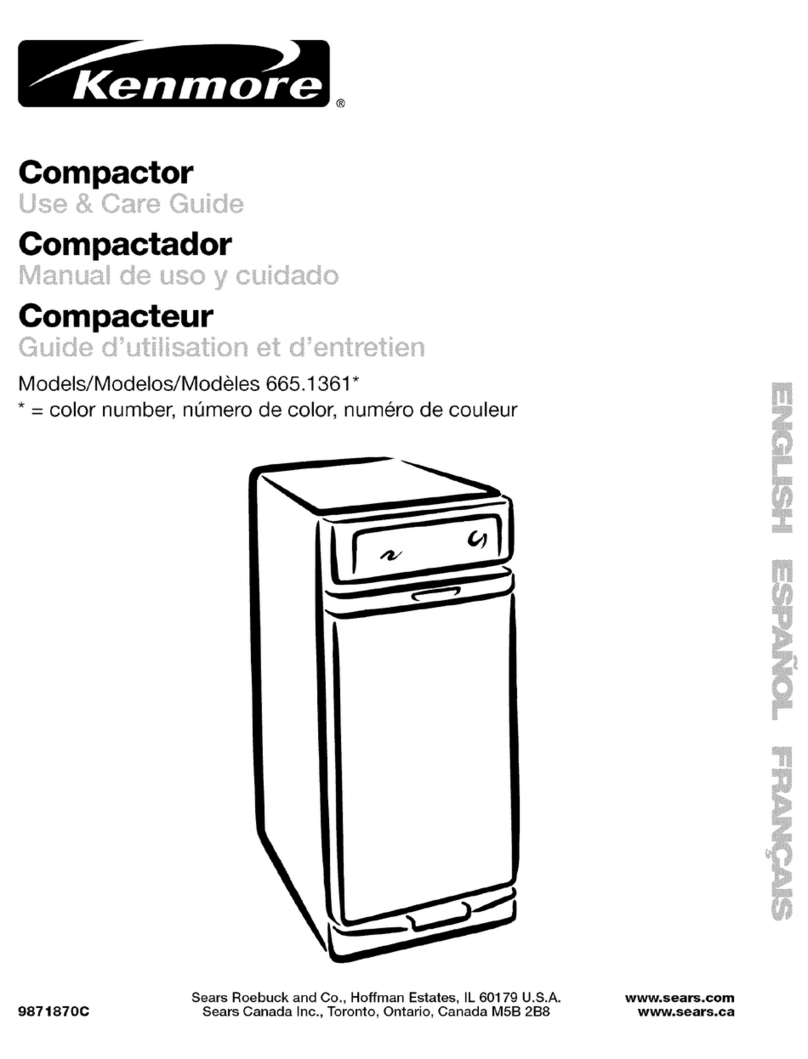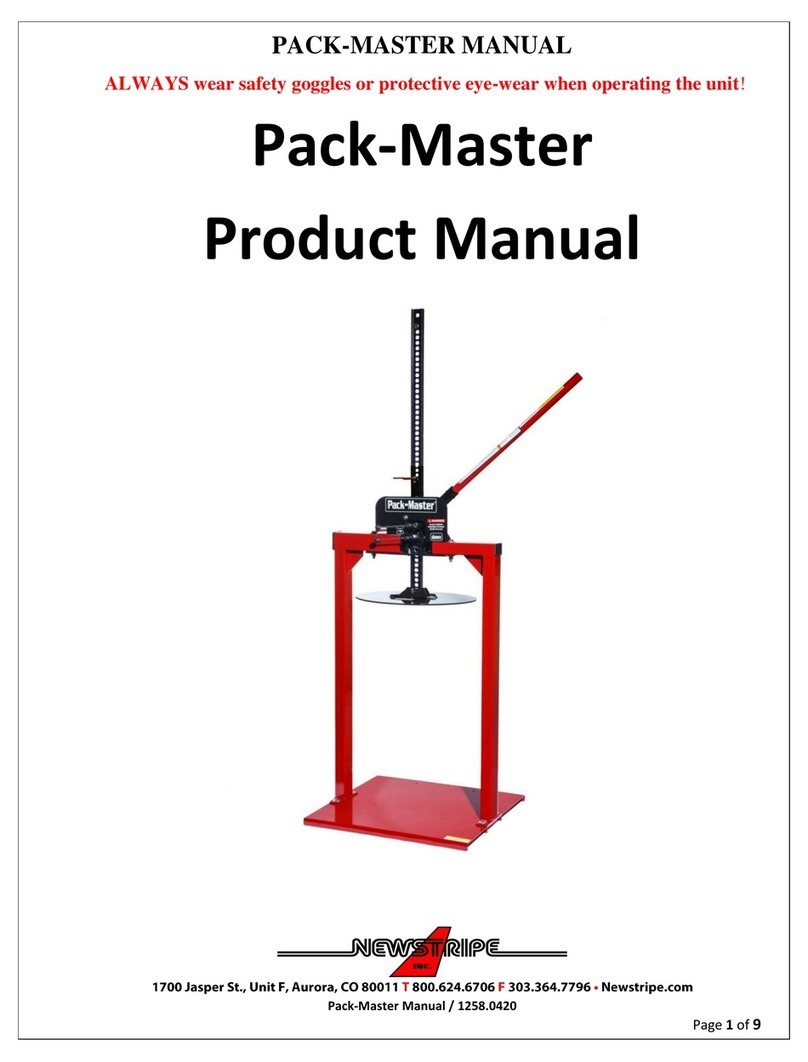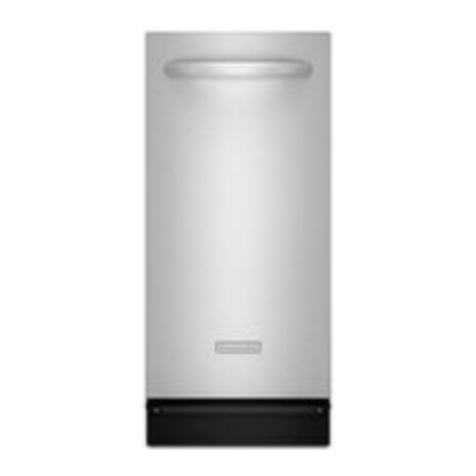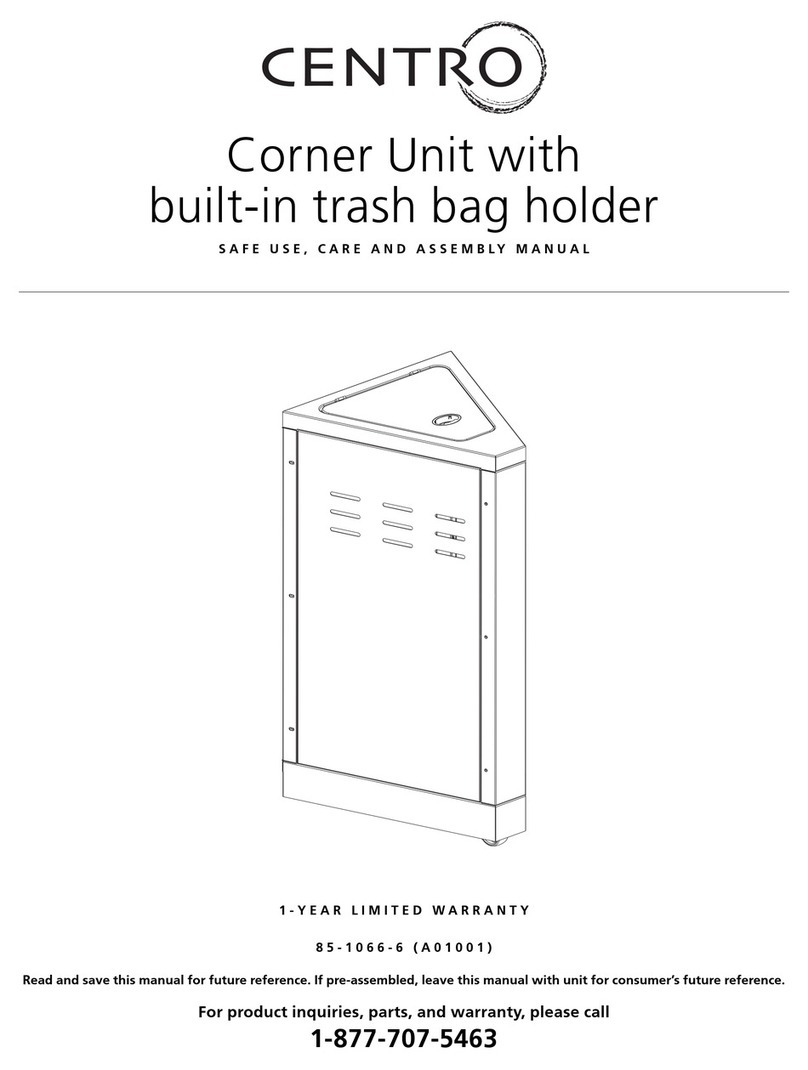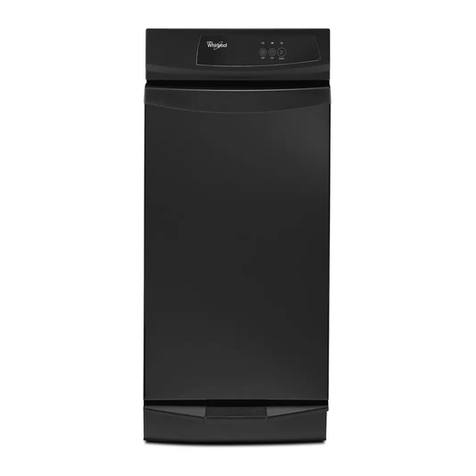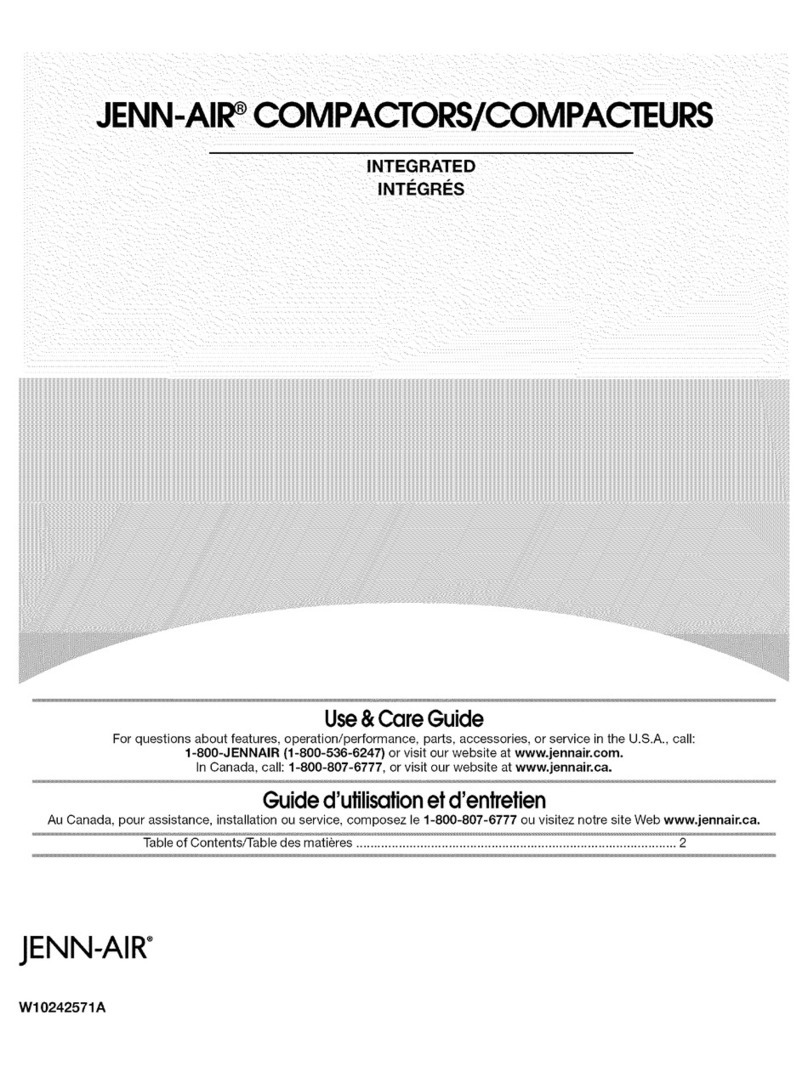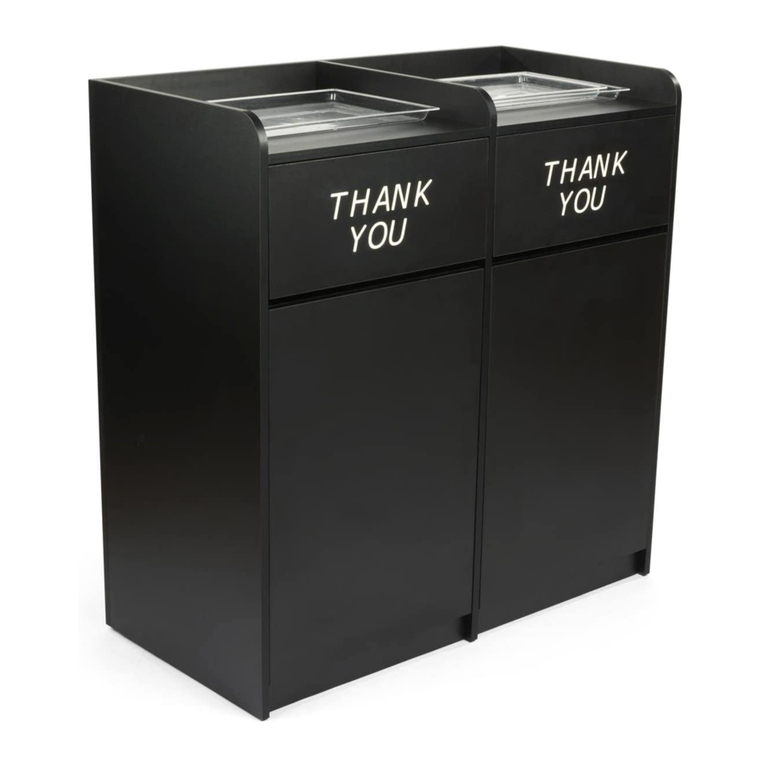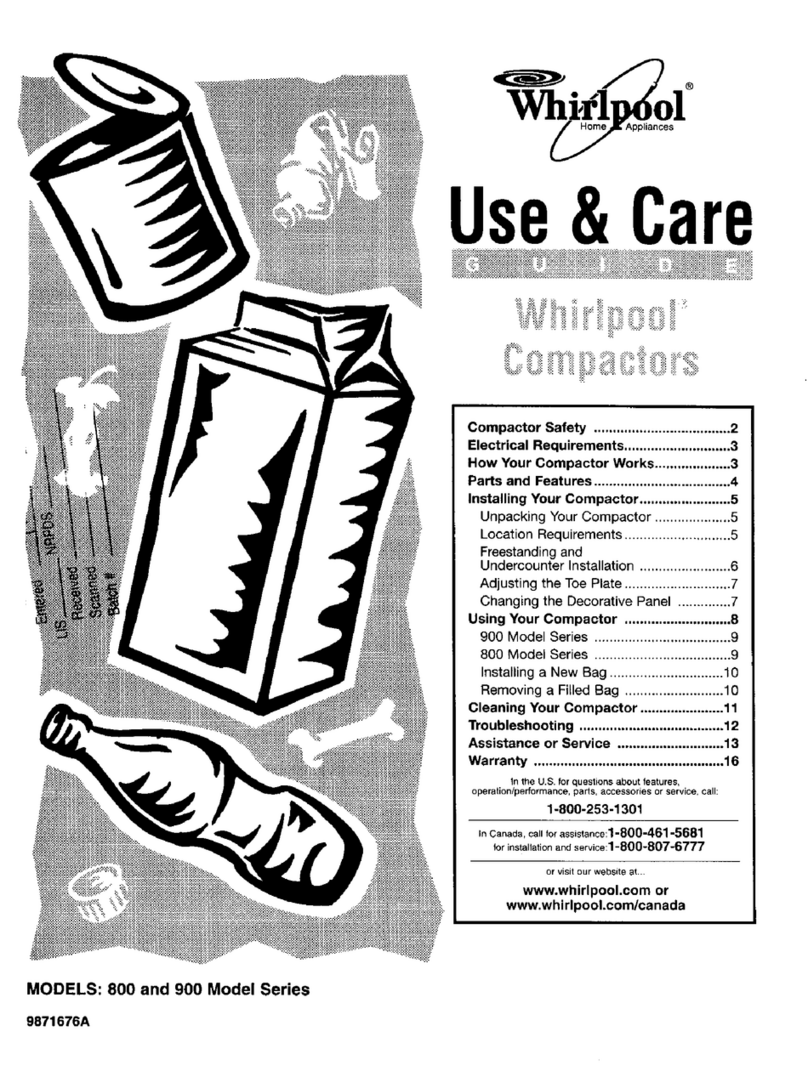IMPORTANT SAFETY INFORMATION.
READ ALL INSTRUCTIONS BEFORE USING.
WARNING!
For your safety, the information in this manual must be followed to minimize the risk of fire or
explosion, electric shock, or to prevent property damage, personal injury, or death.
This compactor is for household use only. Use
this appliance only for its intended
purpose as
described in this Owner’s Manual.
Close supervision is necessary when any
appliance is operated near children. Do not
allow the compactor to be used as a toy, or to
run unattended at any time.
CHILD LOCK-OUT INSTRUCTIONS: Turn
the knob to OFF and remove it when not
compacting trash. This will help prevent
anyone from tampering with the compactor
or children from operating it.
Do not push trash into the drawer with hands
or feet. Trash might contain broken glass,
sharp pieces of metal, or other sharp objects
that might cause injury.
When removing or carrying the trash bag,
keep the bag away from your body. Sharp
objects may have pierced it.
Be careful when cleaning the inside of the
cabinet or trash drawer. Glass fragments may
be stuck to the ram, imbedded in the drawer
surface or lying in the bottom of the cabinet.
Do not install or store compactor where it will
be exposed to outside conditions.
Make sure the compactor is properly installed
and leveled on a floor that can support its
weight.
Do not touch moving parts.
Do not compact food waste such as raw meat
and fish, rinds, personal hygiene items and
disposable diapers. These items create very
strong odors and should not go into the
compactor.
Do not use as a freestanding unit. Use only as
a built-in unit.
PRECAUTIONS AGAINST UNREASONABLE USE
OF YOUR COMPACTOR:
Never compact shotgun shells, cartridges for
firearms, fireworks, etc., which are highly
explosive.
Never compact flammable materials such as
paint, oil- or gasoline-saturated rags, engine
starting fluid cans, paint thinner cans, etc.—
spontaneous combustion or explosive vapor
concentrations could occur.
Never compact containers of toxic chemicals
such as strong insecticides or other poisonous
materials—compaction could release
hazardous fumes.
Never compact aerosol cans containing
explosive or highly toxic chemicals. (If
you are sure the aerosol cans contain
non-hazardous materials such as shaving
cream, cheese spread and whipped cream,
they may be compacted.)
Do not compact lit cigarettes, cigars, or other
hot or burning items.
Do not store or use gasoline or other
flammable vapors and liquids in the vicinity of
this or any other appliance.
Do not overload your appliance.
Handle a loaded trash bag with care. Sharp
objects can pierce the bag and cause injury.
Do not overload trash bag with heavy
material such as glass.
SAFETY PRECAUTIONS
2
Operating Instructions Safety Instructions
Care and Cleaning
Troubleshooting Tips
Consumer Support
When using electrical appliances, basic safety precautions should be followed, including the following:
